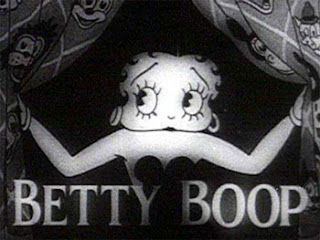Ultimately Fleischer Studios sold the copyright in the works to Paramount Pictures, Inc. The next assignment was to UM&M TV Corp. in 1955, then a subsequent assignment to National Telefilm Associates, Inc., which became Republic Pictures.
In the early 1970’s Max Fleischer’s family started a new Fleischer Studios and went about acquiring what it thought were all the rights to Betty Boop, obtaining the rights that Republic Pictures had in 1997. It developed a successful merchandising business for the Betty Boop character.
In 2006 Fleischer Studios sued the defendants (Fleischer Studios Inc v. A V E L A Inc et al, 2:06-cv-06229-FMC-MAN (C.D. Cal.)), who were selling Betty Boop images based on vintage posters.
The only assignment the appeals court considered was the second one, between Paramount and UM&M TV Corp. The assignment was in 1955, under the Copyright Act of 1909. The assignment had this interesting provision:
| Paramount hereby grants and assigns to [UM&M] all of Paramount’s right, title and interest in and to said Photoplays [of Betty Boop] . . . .
Anything to the contrary notwithstanding, no grant or assignment is made hereunder to [UM&M] of the characters and characterizations contained in said Sold Photoplays or said literary material, or of the copyrights in said characters or characterizations, or of any production or other rights in said characters and characterizations, or to use said characters and characterizations or the names of said characters or trade names, trademark and names of the series of Sold Photoplays or of said literary material in any manner except . . . only as part of the particular Sold Photoplay in which they or any of them are contained . . . . |
The parties agreed that characters are separately copyrightable from the underlying works. The significant question here was, whether under the Copyright Act of 1909 where copyrights were indivisible, the above limitation meant what it said. It did, and you can read the decision for a more detailed discussion. (William Patry, where are you when we need you?) Thus, the new Fleischer Studios does not own the copyright in the character and the defendants are not copyright infringers.
But, Fleischer Studios also obtained the Harvey Films rights in the character but, according to the majority opinion, failed to preserve its argument on the alternative chain of title on appeal. The dissent disagrees:
| The majority inexplicably fails to respond to that theory, asserting only that Plaintiff waived the argument that it possesses the copyright via the Harvey Films chain of title. I disagree with the majority’s assertion for four reasons.
First, it is true that Plaintiff did not raise the Harvey Films chain of title in its opening brief. But its failure in that regard is perfectly understandable. The district court had ruled in Plaintiff’s favor on every link in the UM&M chain except one. Plaintiff thus challenged only the portion of the district court’s opinion in which Plaintiff lost. That strategy makes particular sense because Defendants had never before advanced the argument made in their answering brief. Furthermore, after Defendants did advance a new argument, Plaintiff immediately retorted, in its reply brief, that even if the doctrine of indivisibility applied, Plaintiff prevails via the Harvey Films chain of title. I see nothing to be gained from encouraging litigants to protect against the waiver doctrine by asserting, pro forma, in their opening briefs any and all possible theories of victory, in the possible event that the opposing party will raise a completely new argument in its answering brief.
|
So, a win by the defendants on procedure alone on the copyright infringement theory.
| Although the parties did not cite or argue the application of Job’s Daughters to the facts of this case, and while the district court did not base its decision on that case, “it is clear that we have the power to affirm [the district court’s decision] on an alternate basis” if it is supported by the record. . . .
Job’s Daughters is directly applicable to Fleischer’s trademark claims. Even a cursory examination, let alone a close one, of “the articles themselves, the defendant’s merchandising practices, and any evidence that consumers have actually inferred a connection between the defendant’s product and the trademark owner,” reveal that A.V.E.L.A. is not using Betty Boop as a trademark, but instead as a functional product. . . . The name and [Betty Boop image] were functional aesthetic components of the product, not trademarks. There could be, therefore, no infringement.
|
Further, allowing Fleischer Studios to use trademark law to extend the copyright in Betty Boop was contrary to Dastar: “If we ruled that A.V.E.L.A.’s depictions of Betty Boop infringed Fleischer’s trademarks, the Betty Boop character would essentially never enter the public domain. Such a result would run directly contrary to Dastar.” (For more on the Dastar portion of the case, see Rebecca Tushnet’s 43(B)log). I’m so VERY curious to know what Disney thinks of that one.

The text of this work is licensed under a Creative Commons Attribution-No Derivative Works 3.0 United States License.


